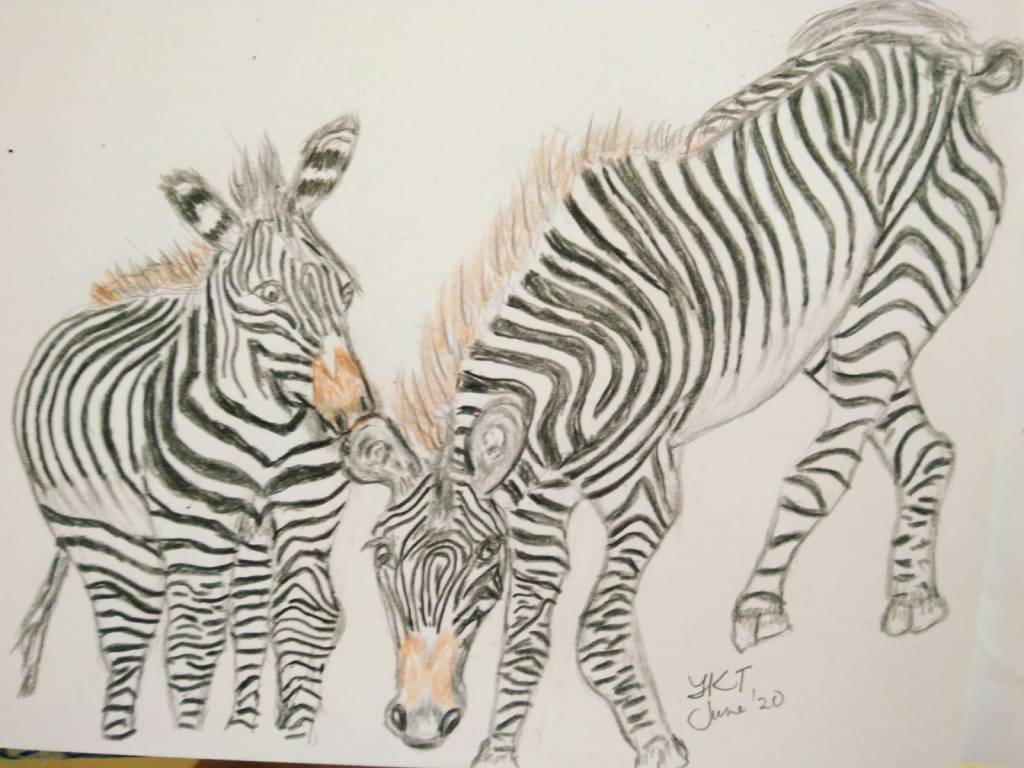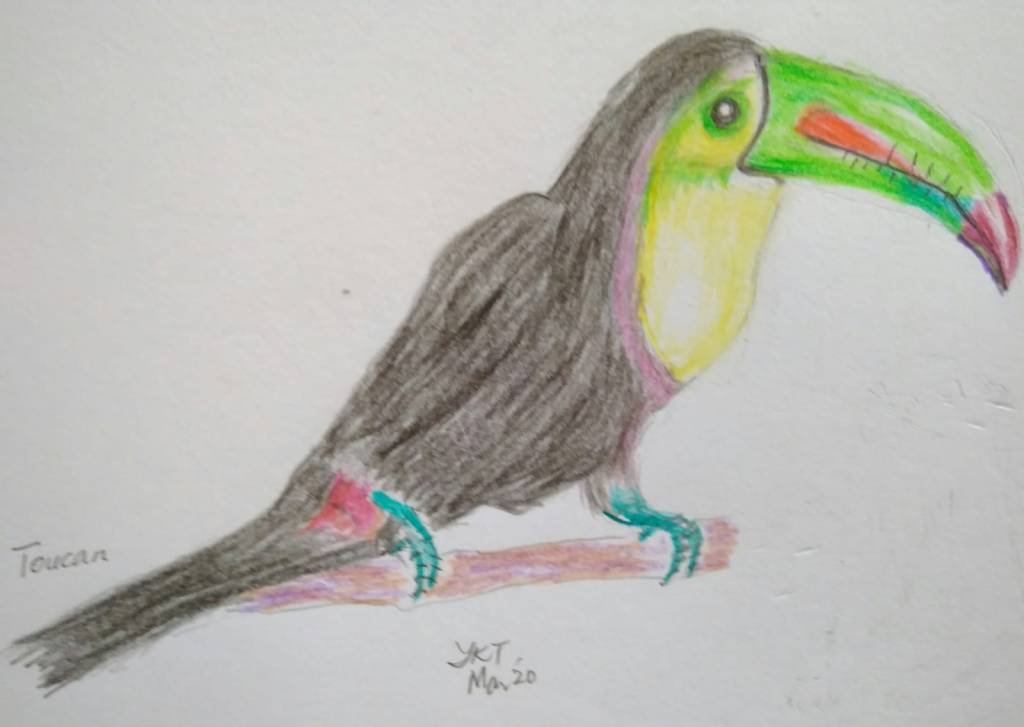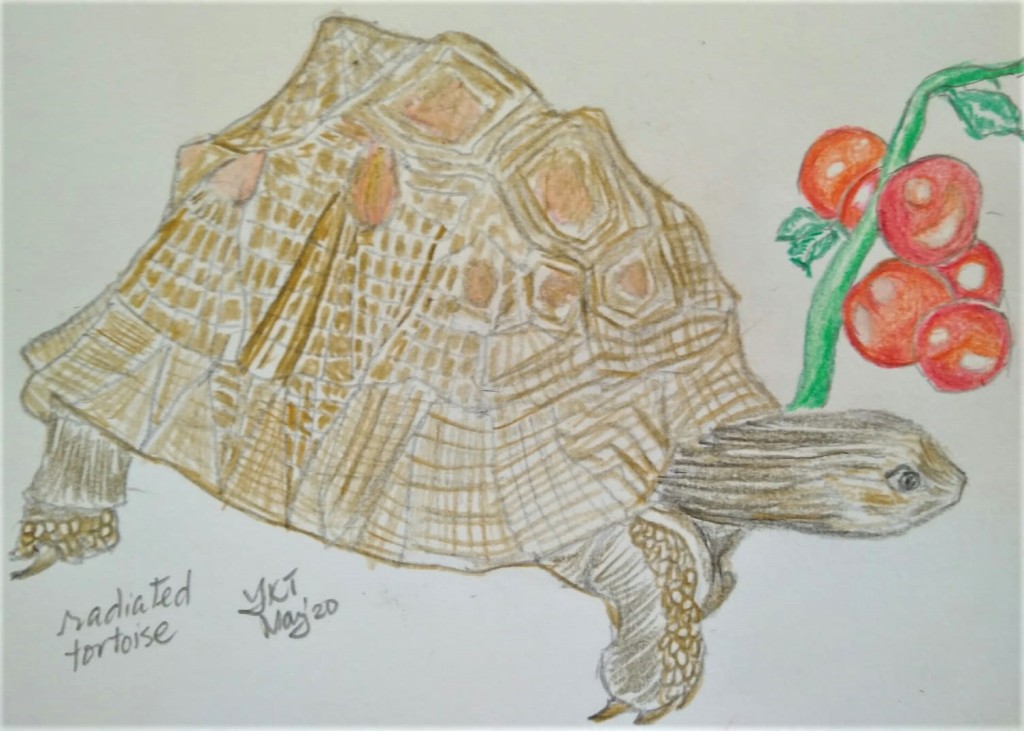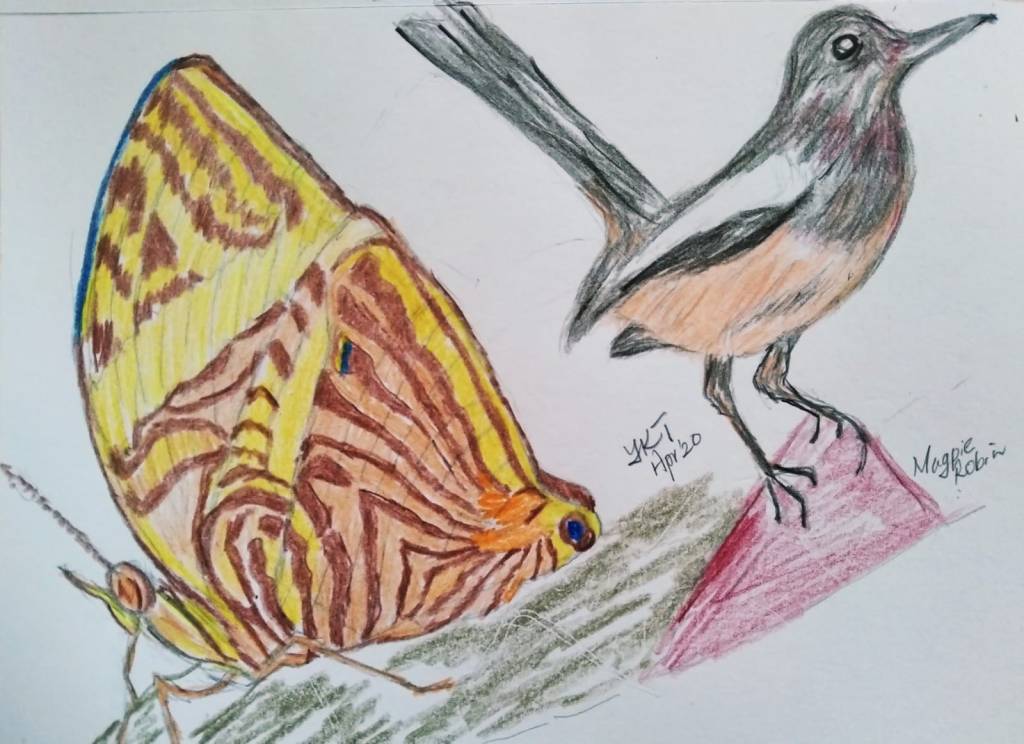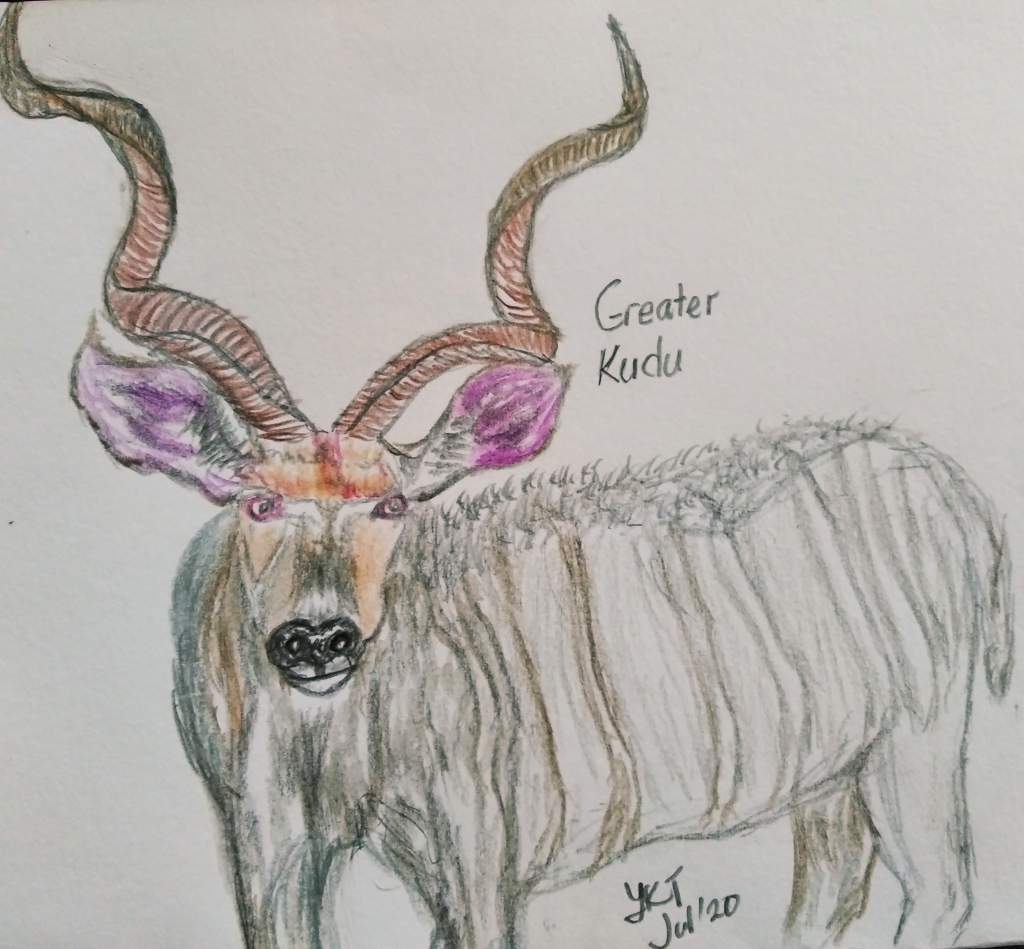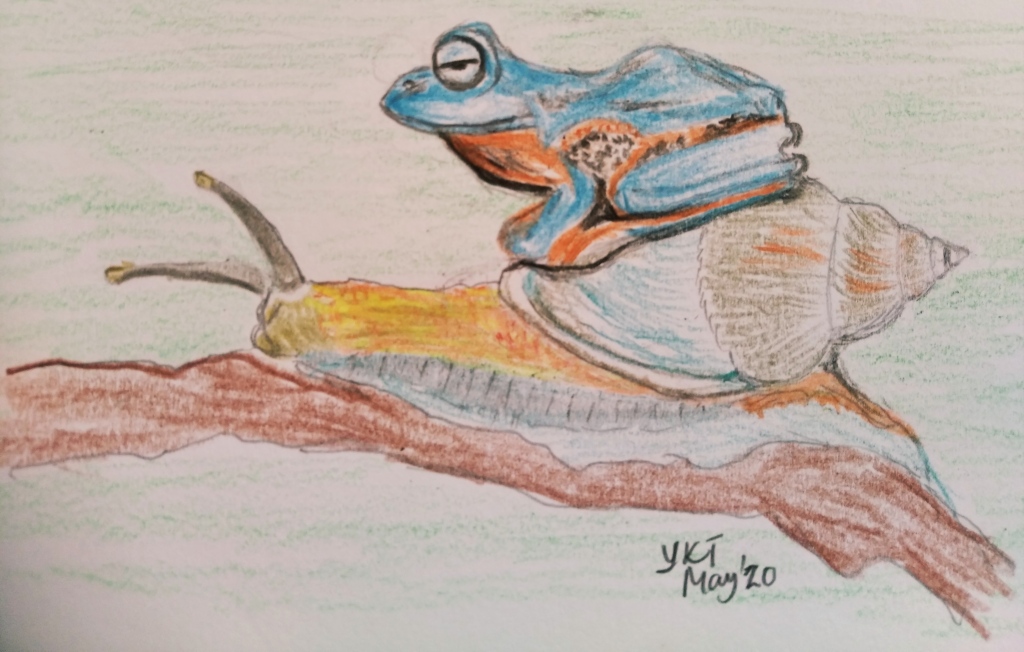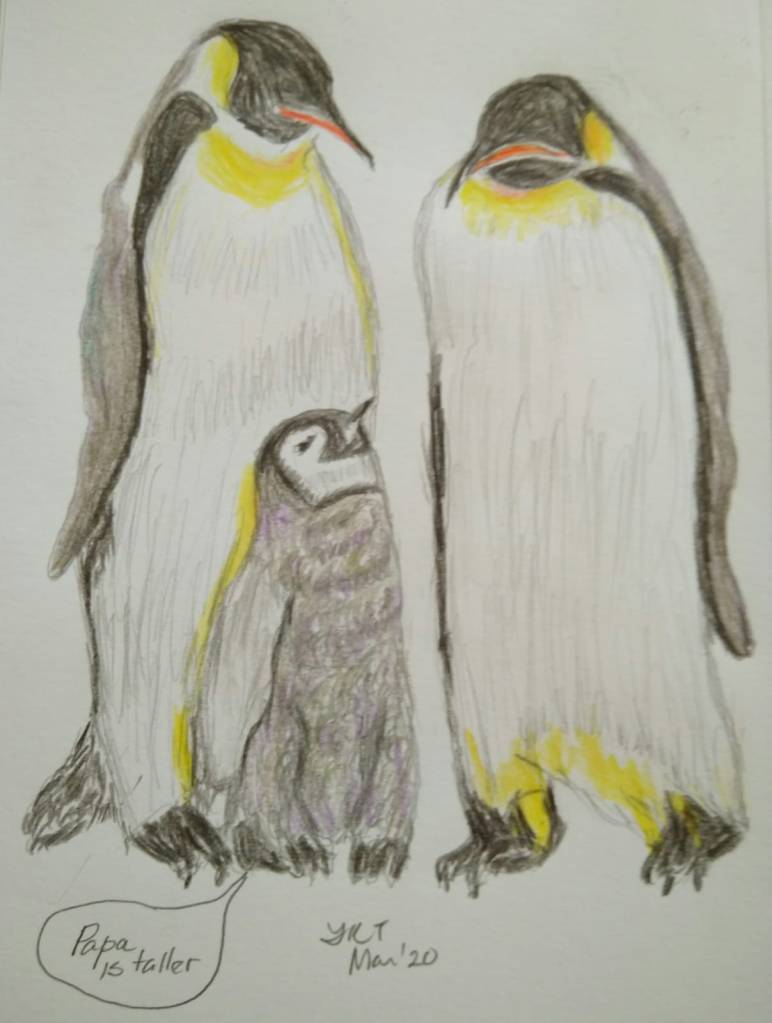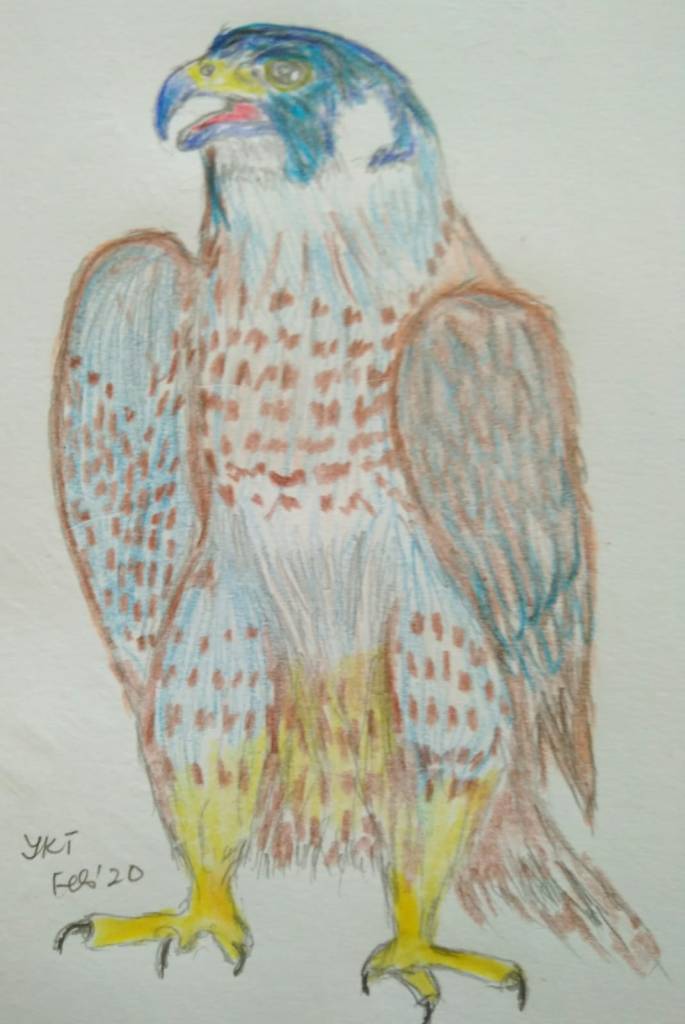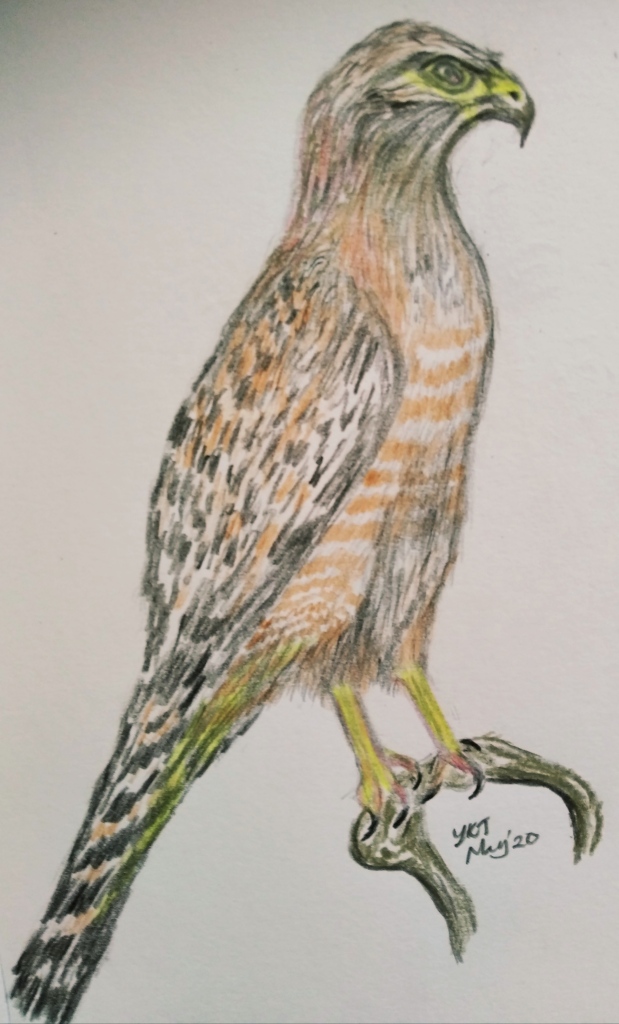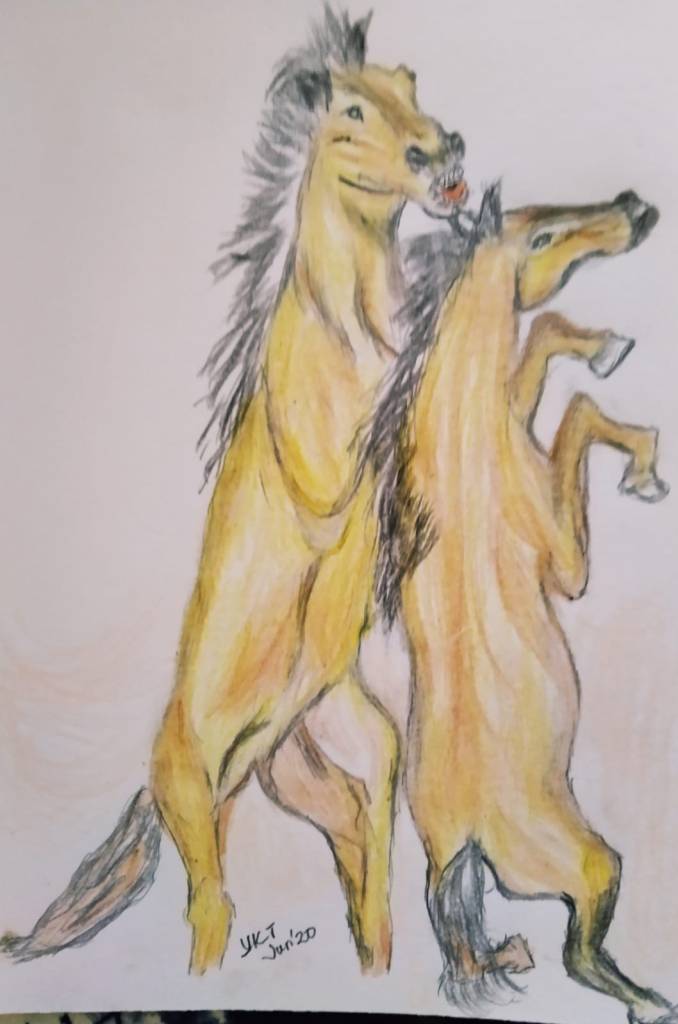Dreading school – Shutting out past demons
Humans are strange. That’s what some animals would tell us, if they can talk. And the most bizarre of human behavior involves our prejudices and disdain for our own species. We grow up with them, some to a less degree with enlightened parents. But nobody teaches a child to hate another – somehow it emerges in the DNA of who we like and who we would avoid. Some children can be so hurt and marginalized as to be driven to suicide and this is not even the subject of school-bullying. Unless you are a rare exception all of us carry baggage through life. Some are so insidious it will literally mark us for life. The most toxic of all are those acquired in the early years of adolescence. I am referring to the cruel practices of social rejection. Young people and even young toddlers can be inhumanely cruel to others. Call it a punching bag, or mere fodder for others’ instincts many with weaker psychological disposition can be so scarred that no amount of time can cure the wound. Somehow the chemistry of rejection among the young remains a basic instinct that many teachers fail to detect and correct.We begin with a story of an angelfish name Pi-Ern. She’s a charming little thing – except for some reason she’s not so well accepted in her school.

But it wasn’t always so when she grew up as guppies in the clutch. Everyone was struggling to live, although it was each one to himself. Her parents would initially hide her in their mouths from predators but it was too soon when she had to face up to the world. But there were others in the group to find company. And that was when her troubles began. Firstly some would sneer at her color – it wasn’t exactly the emerald of the species. But Pi-Ern just wanted company as numbers for safety. So when the school swims off she had to keep up, being always the follower than a leader. Then they scoffed at the way she swam. It wasn’t exactly the elegance that the best swimmer in the shoal boasts of. It was a slight left tilt due to some unbalanced thrust of her fins. But she ignored their dislike and just kept up with them, not knowing what otherwise to do. Then the entire shoal would work together against her – no telling her when there was abundant plankton and leaving her to find out herself. She was just a nuisance to be around and not acting together as a group. Pi-Ern just had to tolerate the social distancing, instinctively sensing that that was her best chance for survival. But it was soon to end. One day while the shoal was peacefully feeding on a rush of plankton, out of nowhere a barracuda appeared. Everyone darted helter-skelter. Pi-Ern hid herself under a rock. It was some time before the danger passed. But when she emerged everybody was nowhere to be seen. They had swam far and probably regrouped themselves away from her. Pi-Ern moved clumsily among the corals, her fins aimlessly turned here and there, not sure how to live on. It would be a matter of time when more trouble comes. Sure enough a reef shark appeared, and she darted back into the rock. She would soon become a rock fish if this habit persists. But she just had to manage, eating scraps at the bottom and frantically looking for her shoal. But she met something else.
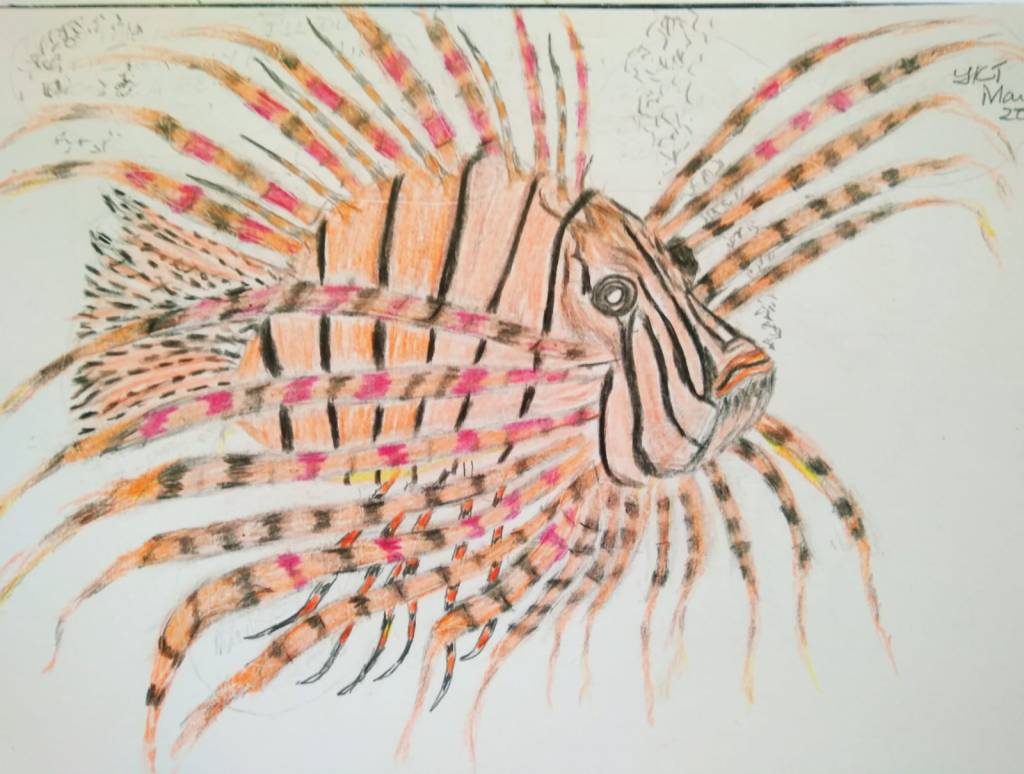
It was solitary like herself, floating gracefully with streamer-like fins waving against the corals. As Pi-Ern approached she got a shock – its face grotesque like a kabuki-dressed villain, its numerous poisonous spikes quavered menacingly. But the lion-fish took no notice of her, in fact like Pi-Ern she was just minding her own business finding prey. So out of needing company Pi-Ern stuck around the lion-fish, making sure to stay away from its spears. And so they spend their days feeding off small crustaceans. Until one day, just as it did before the barracuda appeared, this time it headed towards the angel-fish. Pi-Ern darted behind her friend and just in time, as the barracuda came for the lion-fish. But it was an unwise move. Its venomous spears hit the rogue fish on the snout and cheeks. It retreated, pulling away several spikes embedded under its skin. Pi-Ern was glad she found her nightmare friend. She would certainly be a casualty if she had stayed with her original shoal that bullied her. Anyway she still felt amiss with her kabuki friend. It would be nicer to be home with familiar siblings. And to show them how she’d survived on her own against the barracuda. The chance came after a long time. They were in stormy weather, but the sea was calm below the waves. Pi-Ern was cruising the corals when she espied her group of angelfish floating gracefully on some Sargasso kelp ahead. She was excited. Now I can show them how much I’ve grown striking out on my own.
But as she approached her own people the response was cold. There was no change – they were just as snooty to her as before. Even worse Pi-Ern began to feel inferior again in their presence. She even started reverting to swimming in a funny way. The confidence for having left home and survived against all odds evaporated. She was back to her decrepit self, unloved, unworthy and unwanted. She had fallen back into the dark pit of desperate living, and a horrible thought that her company was right about her after all. A few weeks passed and Pi-Ern started thinking. Enough! Why should I live the rest of my life with the people who hated me just because of what I look and born with? And why should I limit myself with people and their prejudices, who would not give me a chance to grow and be valued as part of their society? It took a lot of courage but Pi-Ern decided she had to do it. One fine sunny morning while trying to keep up with the shoal she took off in a different direction. No thanks nor farewells. She would live her life as she knew was possible, even without the family. She would go out again and find her company who would treasure her and let her grow to be her true self. She would not be forced into a groove of subjugation nor demeaned. She was free, finally.
But Pi Ern continued to achieve greatness. She had traveled far and wide from the school and allied herself with great creatures. She became friends with the dolphins, whales and even sharks, making a name for herself as the plucky angelfish. All this time she had often returned to the lion-fish as her mentor. Then again every time she felt the urge to see her family again, out of old time’s sake, the demons return – she became belittled to her old state. Even the thought made her swim funny. The depression always hit her again and again. Never again will I return to my school that despised me, she swore. Never again to the country that took life out of me! She went on to become the champion angelfish of the region, leading the largest school around. One day several of her old school friends who had left to join her asked. “What changed you into greatness, you were nothing in our school? A good-for-nothing that had no future.” Her reply was short. “I needed a teacher to believe in me. Just one.”
Random tiles of brilliance and madness
The human brain is highly non-linear. Well firstly, its structure is not connected linearly in single or two dimensions. The neurons that fire our very thoughts come from all directions and from multiple stages of action. Secondly, our brains can multi-task. We may not even be aware that multi-tasking is ongoing – suddenly an idea may fire up seemingly from nowhere. Even the process of thinking can be recursive or regenerative – no computer in the world can simulate the human brain processing all the information within its realm. It is precisely that humans cannot fully understand its structure and operation that we continue to misabuse it. How? Well for one by the unsuitable methods of teaching our young. Take learning arithmetic. the multiply tables are learned by rote in most traditional schools, as well as in vocabulary and rudiments of music. But multiplication tables are entirely linear! The brain abhors it because its non-linearity is supremely more efficient that rote learning. But most people had to go through this abuse at some time in our schooling. And then we are often tested on how well we assimilate rote learning. But most animals don’t go to school to learn multiplication tables or repetitive memory tasks. Unless they are in a zoo, or in such programmed learning such as kennel training. However it is still highly unsuitable to teach animals by a repetitive reward system. They should be more capable than that – their brains are highly nonlinear too. But animals don’t need to qualify for high school or university entrance, or law exams, driving or flight license. So for most of us in modern society we are marked by our performance in tests – whether we like it or not, it is saved somewhere as a possible lifetime reference to condemn us to a hierarchy of performance. But not the experience of these two creatures we’re about to meet -the tree hopper Philippine tarsier and the unassuming iguana.

Lumi the tarsier (tarsiidae) a primate between lemurs and monkeys, lives in a branch of the mangrove forest common in Malaysia, Indonesia and the Philippines. Their small bodies (average 10 cm) allow them to hop on insects that fly at night, navigating well using the over-size eyeballs. But what has Lumi got to do with Guzo the iguana? Well, Guzo is the pet iguana of Hernandez, who lives in a southern Philippine island of Leyte. Lumi and Guzo became friends when one evening Lumi hopped onto Guzo’s plate of leftover leaves which had attracted dozens of midges. When Lumi helped himself to his insectivorous diet Guzo just watched bemused at his funny looking new friend. As time went by it became the habit of Lumi to drop in to his friend’s plate of leftover leaves. Hernandez also noticed that ever since the wild visitor came, there were fewer mosquitoes and pesky insects coming to his porch. One day Hernandez could not find Guzo. Searched as he could but no rock nor tree branches could reveal his iguana pal. Then an idea came to him. Perhaps Lumi could help. So he laid out Guzo’s dish of leaves as usual and waited for nightfall. Nothing. For a week Hernandez checked the plate every night, until they started to dry out. He had started to imagine his pet was eaten by the jungle fowl that roamed around his house. Then the typhoon came. His roof started leaking badly and the word was the onslaught will turn into a devastating flood. Something must be done to stop the leak. So he set up the ladder and looked. There next to the culprit hole in the roof where rain water was rushing down, he saw a plant. Somehow its seed must have blown onto the rooftop and it had grown a meter tall. As he looked closely he had a pleasant shock. There tightly clutched to a furiously shaking branch was Guzo. On the next branch was Lumi, holding to dear life against the howling wind. Both had become fast pals and decided to move into the rooftop plant of Hernandez’s house. They have been home together all these time. Hernandez realized later that the tarsier had used the plant as his home base, hopping out at night and returning every morning to be with his iguana friend after hunting insects. What an unlikely pair of friends!
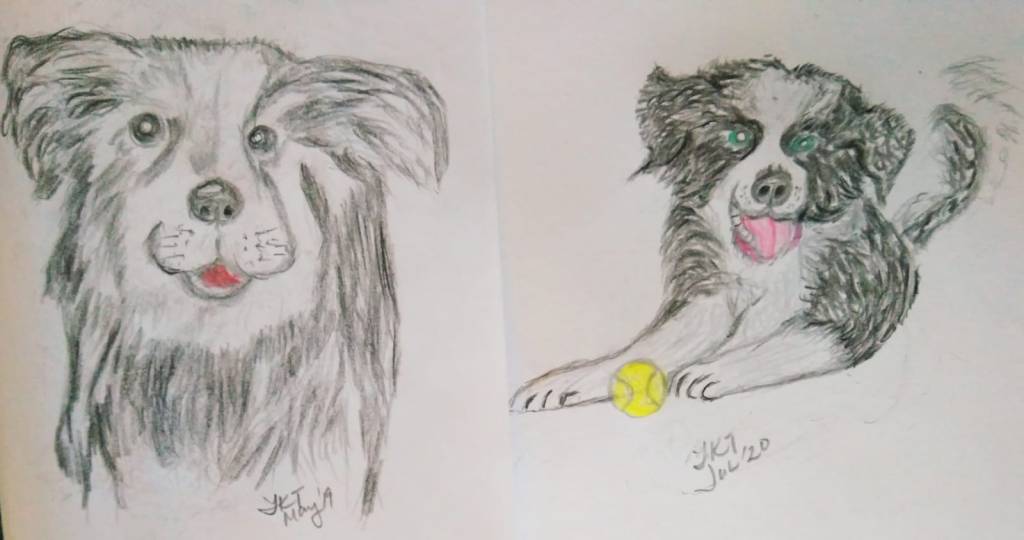
Up in the highlands of Scotland the sheep rearing family of McFawley had always kept border collies. Fiercely loyal and dedicated, the sheep-farm dogs are somehow born with the instincts of herding sheep. So when Pepe was not even a puppy of 6 weeks he was beginning to herd the family of 5 kittens and the chicks in the coop. Sometimes there was nothing to do and he would upset the master’s basket of tennis balls and practiced herding them into the corner. So keen was he at work that farmer McFawley started Pepe before he turned one, bring home sheep, goats, ducks and chickens at sunset. For him it was play et nauseum, but little did the farmer realized that Pepe was turning into a genius at counting. One misty day after he thought he had collected every livestock home, Pepe remained unsettled as the farmer settled down to his usual ale. “What’s troubling you Pepe?” he would ask and Pepe would twitch his ears and gave a muffled bark. So the farmer recounted his sheep and indeed there were three missing. Armed with his shotgun he headed back out to the hills that evening, suspecting wolves around. But he had no need of using it, as Pepe finally found that they had fallen into a ravine. “You counted did you?”, the old farmer asked, but he did not expect a response. Pepe merely crouched low, expecting a command from his master. But a surprise awaited the farmer the next summer. Four of the ewes had given birth and the herd had increased by a dozen. Another misty day in autumn, the same thing happened. McFawley though he had collect all the sheep but Pepe discovered two still missing. But how did Pepe know, unless he knew how to add and subtract? So he did an experiment. He kept 5 chicks and had Pepe coral the chicks into the enclosure. Then the next day he returned the 5 chicks. Pepe didn’t complain for the extra chicks. But the following day when he kept the 5 chicks again, Pepe was unsettled, sensing some had been missing. Here was a smart dog indeed. Somehow he learn that he must check his sheep at the end of the day to ensure nothing is missing.
Beauties for a lonely stag

The flower elk is stunningly elegant. Males can grow up to a meter tall and its antlers can weigh several kilograms.

Some of the antlers were too beautiful for their owner’s good. Many a hunter had their eye on the trophies. Take the story of Elmo the Irish elk. His flower stag measured 3.5 meters across from tip to tip. Together with his mate they roam the woods in freedom. Until a hunter chanced on his stupendous horn. Elmo was no greenhorn towards hunters as it had happened before. Sensing danger he pranced forth when the hunter took aim. As the shot rang out it echoed throughout the woodlands. But Elmo didn’t fall that day. His mate did. He didn’t know as he took refuge in the woods, fearful that the hunters would pursue him for his prized antlers. For the rest of the hunting season he hid in the deepest forest – he could hear the shots of hunting rifles all that time. Then he felt lonely. He was still young and the instinct to mate stirred in him. But there was no prospect deep in the woods. One day while sipping from a creek he espied a fluttering beauty among the flowers at the water’s edge. It was a common posy. There was a serene peace as he shared the moment with the butterfly.

Elmo spend his remaining days of the hunting season in loneliness. He wished he could find and settle with as many mates where available like all males of his specie, but it didn’t happen. He was a dying, lonely stud.

Summer arrived and he ventured out since the sound of hunting had stopped. He finally found a herd, with quite a few doe among them. But despite his amorous advances somehow none of the ladies wanted him. Elmo felt resigned to find solace in butterflies and he did find quite a few. Time went by and as he got older his chances with the ladies grew dimmer. Until the hunting season returned.
He was admiring a clutch of fluttering beauties at his usual waterhole. Then a shot that rang out startled him. Fortunately he was hidden among the flowering bushes and the target was somewhere nearby. Instinctively he lowered his head and hid his newly crowned stag from view. But no more shots came. Then a doe ran past. He looked up and noticed hunters approaching a fallen stag. This time the hunters did not miss. Elmo rushed away to the cover of the forest. After some time in hiding he could hear the sound of the hunter’s vehicle moving off with their prized booty. He let out a soft grunt of relief. To his surprise came a grunt in response from somewhere near. He twitched his ears and turned towards the object. It was the frightened doe whose mate was taken. She stood shivering and Elmo approached slowly. She didn’t run but let him console her. It was a defining instinctive moment of two beasts whose partners were cruelly taken. Elmo had finally found a replacement. It wasn’t a chosen partner like humans do. In his world, mating is with anyone available and there are no restraints – like polygamy laws from the courts nor adultery or fornication tongue-wagging from churches. But it was enough.
Baby love
The beluga whale is an arctic mammal with a highly social personality. It is unimaginable why humans used to hunt them to the point of near extinction and they are near the red-list today. Still they remain curious and forgiving of humans they come across. You can be mesmerized by stories of music -loving belugas nodding their heads to the beat of aquarium bands. Beluga babies must be the most curious and playful mammals north of the equator. Here’s a story of a baby-loving beluga.
Doodle was overjoyed when she had her first litter of two bubbly beluga calves. As for all loving parents she would spend the whole day cavorting coaxing her newborns to swim or dive. The young must not only learn to swim but hunt for krill or bait. The “melon” or echo-location on their foreheads navigates their movement. So like bats they estimate distances by sending out sound, except it travels about 30 times slower in water.

Doodle was lucky – normally a beluga gives birth to only one offspring, but she had twins. So time flew by and the babies grew up and swam further and further from their mother. Doodle desperately loved to have more. But it was not to be. Then her sadness took a surprising turn. One day an aquarium crew spotted her and decided to trap her. Doodle was initially stressed why she had to be strapped and lifted onto a truck. But after a short while she was carefully lowered into a huge tank. Everyday she was well fed and became a star attraction to the curious humans who came by her glass panel. She took well to humans. Some even came by to serenade her and she loved music! Her echo receiver seemed lulled by music that she would nod in pleasure when the music crew came to entertain the crowds. And then there was something special about her. The aquarium crew found it out by accident.
One day a mother of 4 children came to her glass panel to admire the sea turtles. The children were entranced. The turtles were not. As they began to swim away one of them an autistic child, started screaming in tantrum. Nothing could be done to appease him as the staff came around to help. It looked as if the child would not stop. Then it happened. A large white shaped shadow came slowly to the glass panel in front of the hysterical child. Softly, it nudged into the glass right in front of the child and mildly surprised him. The cries stopped and he looked wide-eye at the curious white head nodding gracefully. More children ran to the area, shrieking excitedly. But Doodle just stayed there looking curiously at the troubled child and gracefully turned her head here and there enjoying the presence of other kids crowding around. Nobody knew how long she stayed with the kids. At closing time the parents came to bring the kids home. But Doodle would swim around, as if to say goodbye, lifting her fins like a human gesture. All this time the aquarium staff realized how much Doodle loved kids. They even planned children’s show times so that the kids were entertained by how Doodle respond to human gestures. Doodle remained the aquarium star for several years. Then an enlightened staff decided that Doodle should be released back to the wild so that she would have her own offsprings again. It was an inspired decision. A good-nature mammal like her will never forget her pleasure of enjoying children, even if human.
The economy of Death
Death is very likely the single best invention of life. It is life’s change agent, clearing out the old to make way for the new. Someday we will all become old and cleared away. Your life is limited so don’t waste it by living someone else’s or trapped by dogma of other people’s thinking. So as always. stay hungry, stay foolish. Those were in essence Steve Job’s commencement message at Stanford in 2005. Death is humankind’s last quandary. Societies from time immemorial had always to grapple how to care for the old and infirmed as they passed their last days. In olden Japan there was a grim practice called ubasute or oyasute to rid off an extra mouth that had become economically useless in old age. The young would eventually carry their decrepit old into the forests to leave them dying of starvation or some animal carnage. One such young man had his mother on his back for the long trek to a remote forest. As he piggyback his mother with a heavy heart he noticed the old woman pulling leaves or flowers from whatever vegetation she could get her hands on. As he turned his head he noticed the mother had dropped pieces of vegetation as he walked. Why, he asked. “So you’ll be able to find your way home.” Sobbing, the young man carried his mother back. Here is a continuation of the story.
Akiko, the mother who escape senicide by his family had nothing to do and spent her time walking around the fields where the rest of the community was trying to eke out an existence from the famine. Everyone was hard pressed but she would go around trying to help although she could hardly see or walk. One evening she was trying to look at the blooming spring flowers at the edge of the forest when she encountered a visitor. There, admiring the butterflies that flipped around was a raccoon-dog. Usually they are shy and keep away from humans, but for some reason he didn’t fear Akiko and kept a safe distance where she could see him. Akiko thought it was the family dog and reached out to him – and he responded by sniffing her fingers. Then he turned slowly to walk off into the forest. Akiko followed, though shakily with her walking stick. But she couldn’t keep up and in the distance she could not see that the raccoon had discovered a beehive. After a while the bees seemed to have left, leaving several pieces of honey combs to the raccoon. He looked up at the approaching Akiko and seeming to say, “go ahead, have some”, he trotted off. Akiko tasted a piece and took the rest home to her family.
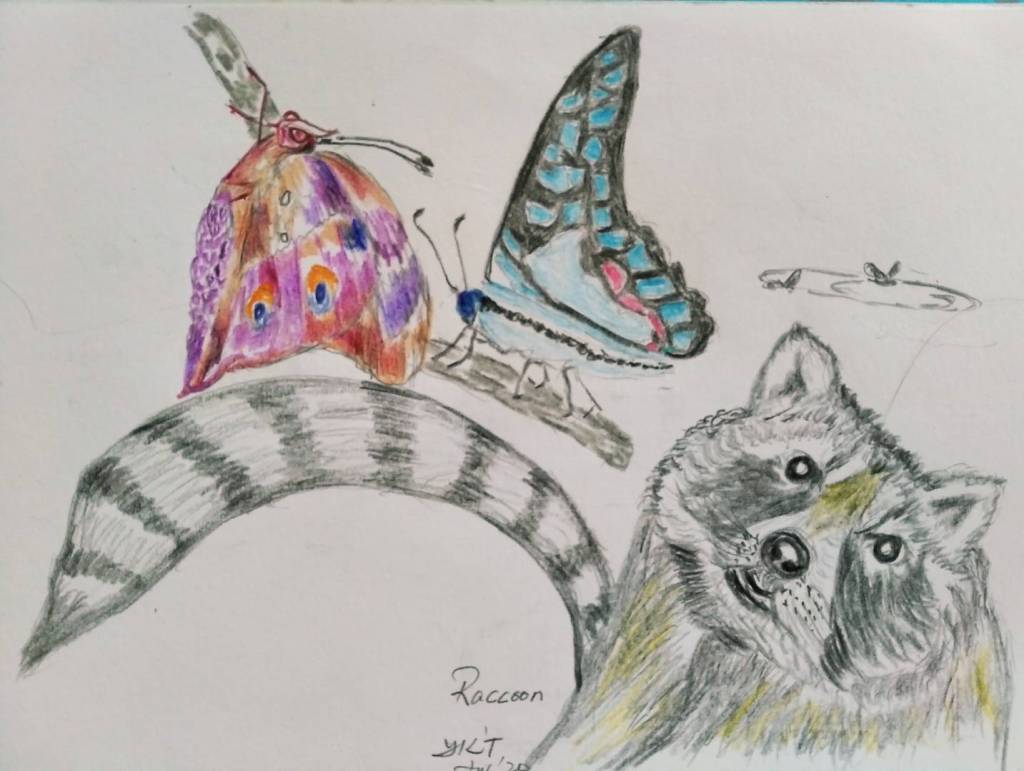
“Where did you get them obaachan?”, the grandchildren asked, slurping the rare treat. Oh, it was Rinchan, the family dog who found them. So nobody thought nothing further of it. Until she brought home something else the next day. She found a freshly killed quail lying on the path where she thought Rinchan was leading her. The family was thankful that Akiko was contributing to family food, but still mystified how the family dog could do that. So it happened again and again. Among other fruits Akiko would bring home quail eggs, some large frog-legs, slightly eaten escargot snails and even a harmless tree snake. At a time of famine the family was grateful and even the family dog Rinchan was getting fatter. Lets follow her, one day the son’s wife suggested. So she did and secretly watched Akiko reached the edge of the forest. Akiko waited and waited while being watched. No raccoon. Evening came and the sky darkened. Nothing. Akiko turned to go home, empty-handed. Then Rinchan the “real” family dog raced toward her. “Rinchan, go home! There’s nothing for us today”, Akiko said quietly. The wife reported all she saw that day. But nobody was wiser. So the family left Akiko alone. Some days she’d bring home more edibles but it was common knowledge that it wasn’t Rinchan that brought home bread. This went on for two summers.
One autumn day Akiko didn’t come home. The family went out early next day looking and calling her name. When they entered quite deeply into the chilly forest they noticed it. Strewn along the forest path were pieces of vegetation, pieces of flower petals or leaves leading here and there in the tortuous path up the mountain. After several hours they saw her body, cold and slumped over a fallen tree. Nearby was the carcass of the raccoon-dog, obviously dead for sometime. Akiko had been looking for her missing provider, and after finding her closest friend, decided to die in the mountains.
Slither, hither – if you eat me I’ll eat you first
If only men goes out to work and all the women keep house half the world’s population would spend their entire working life at home. This is not just a no-brainer statement. Consider this – in 2015 23% of US women returned to the workplace 2 weeks after childbirth mainly to keep an income. Figures from farming communes in the rest of the world would probably give a higher figure, simply because agricultural work in less advanced economies benefit from an extra pair of hands. But recent events made working at home a real necessity – either to avoid a pandemic infection, or simply a matter of convenience because of technology. There exists a creature that mostly work from home all through its adult life.
The moray eel is an accomplished ambush hunter. Often the unfortunate victim would not realize whose house it was swimming past until its too late. There are over 200 species of morays with lengths of 10 cm to 3 meters with the heaviest recorded at 30kg. Most are colorful and spotted but few are aware that it has two jaws – the inner or pharyngeal inside the throat pulls prey into its gullet. Like some humans moray eels are homey, simply because it is the most convenient to ambush their prey. We begin the story of a moray named Mossy who like most normal people instead loves to go out. Mossy had learn by instinct that the modus operandi for food is to surprise her prey. However that would be difficult if she’s not home.

So one day Mossy was out trying to hunt without success. With no element of ambush she was frustrated enough to retire back to her dark hole. Then a grouper glide by. “Hey moray – no luck eh? Would you like to hunt with me?” Mossy had never hunted with another fish before. The grouper’s head continue to nod, like asking Mossy for a reply. OK but how was her reply. You go hide behind that rock and when I chase a scad you ambush, was the reply. Mossy thought that a bright idea – at least brighter than hiding in her cave whole day waiting for a catch. And so they did, the grouper would herd the prey into Mossy’s direction and she would pick them off in ambush. After a while the grouper felt something amiss. Hey you’ve been getting all the food while I chased them all day! How about giving me some from your jaws?

Mossy didn’t know how to do that. Every prey was caught right into her jaws, with an inner jaw pulling into her gullet. There was no way she could regurgitate a prey to her accomplice. Meanwhile the grouper was getting agitated and hungry. Then it dawn on her. She turned quickly and ran with the grouper hot in pursuit. The partner was becoming the bounty. Mossy made it just in time to her cave except for a bit of her tail snapped off by the giant. It was too big to go after Mossy into the cave, besides it was dark. The grouper swam around lazily outside the cave for a while and after some time decided to call it quits. Then as he turned to go suddenly a dark shadow shot out of the cave. SHOOSH! This time Mossy had part of the grouper’s tail. Moral of the story? Sometimes it is better to work from home. And there exists many that does everything from home – the spotted garden eel is one of them.
Precious is my unspeakable companion
The guinea pig is neither from Guinea nor a pig. Coming from the rodent family caviidae it is a close relative of the capybara and originates from Peru’s Andes. It has been suggested its squeals led to the notion of pigs. They were hugely popular as laboratory animals numbering 2.5 million in the ’60s decreasing to 375K in 2007. However they are perfect pets for young children for their serene and lovey-cuddly behavior. This is the story of Coffee who was rescued from the university laboratory. It must have been the color of its coat that caused one researcher Daphne to bring him home as a pet.

But Coffee took to Daphne’s mother more, because she works from home, as a jewelry designer. Every morning Daphne’s mother would feed Coffee his vegetables then set down to her computer, coffee in hand. Her work had already produced several acclaimed pieces and lately, she had been busy with a flood of customized orders. At the end of each workday she would welcome a jewel cutter and produce the pieces in her adjoining workshop. Then she would polish or finish them for further evaluation the next morning. Sometimes she would put on a ring on her fingers to view them from various angles or look herself in the mirror for earrings or necklaces. Sometimes she would make more than one piece for the customer’s evaluation. She had to organize where to keep her finished and unfinished works and she was not very good at organizing her workplace.
One evening she produced several pieces for a favorite customer. So absorbed was her that she would work till the early hours. Still it took more than a week to finalize the details and narrowed to two diamond-studded rings. The day before the customer was to view the proposed pieces she had a setback. She could not find them. She searched all over and the more she tried the more frustrated she became. She postponed the viewing so as to organize her work better.
The week passed and still no jewelry found. She began to suspect that they could be stolen. Many customers had come through her workshop that week. Could it be the delivery man? Or the part-time cleaners? The aircon maintenance? She reviewed her security cameras. Nothing unusual. She had to redo her work. But as all artisans can tell you – each individual work of art is different. She tried and repeated each prototype and every time felt that her first effort was the best. Being a perfectionist she felt frustrated having to sell a piece that was below her best results. She decided maybe the best outcome was to cancel her contract with the customer. She would call the customer first thing in the morning.
After telling her disappointed customer she settled down for coffee. But not before feeding Coffee. She squealed in delight whenever she opened her fridge. Excited, Coffee started twirling her running wheel. As the cage was opened a pulsating light seem to shine out of the cage from behind the turning wheel. Then Coffee stopped to eat her vegetable and the mistress looked closer. There it was, her lost masterpieces half covered in poo. “Coffee. you darling!”, was all she said.
The next day the customer came. “You know, I learned a new word today. It is coprophagia, where mammals eat their own poo to re-digest the caecals we feed them with. Since your finger is fatter than mine, it must have slipped out while I was putting in her vegetables. But if you’re not sure of today’s ring you may have to come back later this week. It is still in process!”
The gorilla with a problem
Andrea Kate is a dentist. But she also loves animals. Her father, an anthropologist would leave pictures and articles of wildlife in the study and at a young age she would pour through articles of primates on his research on animal cultures. Then in the third year of her practice as a dentist a chance jumped at her. There was to be a study trip of mountain gorillas and how they cope with eating problems. It was a first foreign trip out to the Congo region and Andrea loaded whatever dental tools she might need in her interaction with the team of veterinarians and scientists. The first week of their month-long stay in the forests was to observe and make notes of feeding habits and how the endangered gorillas lived. Soon the troop began to settle down and gotten used to the humans watching them with binoculars from their tents and tree-houses. Andrea was taking copious notes on how the gorilla family tend to their young and relatives. Then one night little did she realized that she’d have a first-hand experience on animal dentistry. A young juvenile broke into her tent and took away much of the snacks she had brought along to the trip. Peanuts, walnuts, hazels were missing from her bag. But that led to interesting observations the following day.
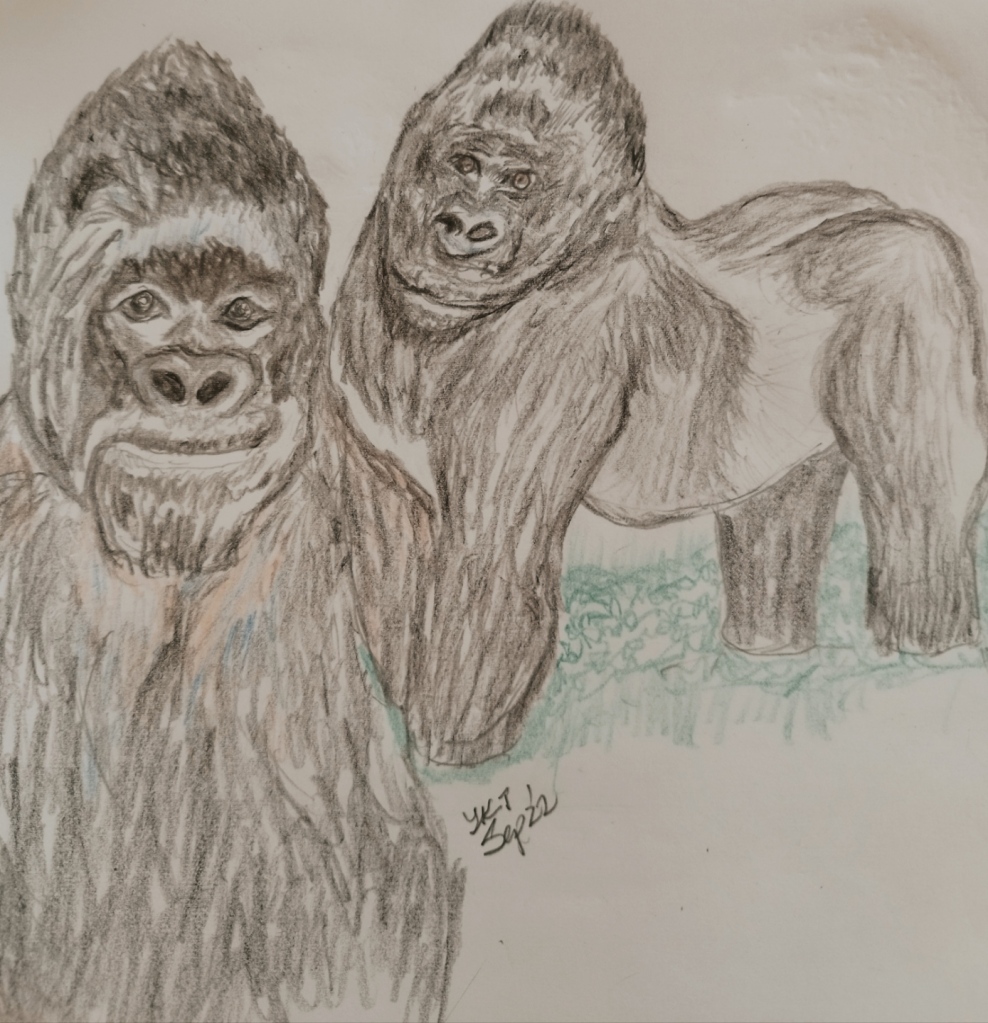
The next morning Andrea saw something interesting through her binoculars many scientists suspect is true. While the younger gorillas were gleefully eating the shelled nuts Bono cracked the walnuts with his teeth and digging out the edible flesh with a twig. He went on for a while with the pecans and hazelnuts, then suddenly put the twig into his mouth to pick at his teeth. It was a “aha” moment as evidence of gorillas using implements to clean their teeth is rare. As Andrea collected evidence using her zoom video-camera she also noticed something peculiar about Bono. After every meal he would pick up a bunch of roots and chew on them, as if flossing his teeth. This went on for several days. Then the following week he stopped eating. Andrea was troubled and asked her veterinarian colleague to help. They observed Bono lying on the ground while the rest of the troop ate, as if in pain.
The mountain gorillas that live in the elevated regions (3000 to 4000 m above sea-level) of Democratic Republic of Congo (DRC), Rwanda and Uganda were critically endangered due to habitat loss, disease and incidental poaching. With more awareness and research, numbers were increasing to over 1000 from about 400 in the Virunga area. Yet, war in the surrounding countries such as the DRC is making restoration difficult and dangerous.
A group of vets together with Andrea decided to help Bono, thinking that he might be suffering from an intestinal problem, a common complaint. He had to be darted for close medical examination. But Bono ran away, thinking he might be harmed. So after some tracking the anesthetic dart found its mark, but they still had to follow some distance. When they finally found Bono and was about to transport the rescuers was suddenly surrounded by armed militants. Through the forest guide the medical team understood that militants were demanding them to surrender their medical supplies. They had to negotiate quickly, before Bono awoke. Let us treat this gorilla first and you can have our leftover supplies was the agreement. A quick examination showed Bono had no abdominal irregularities but Andrea found two teeth on the verge of decay and infection. Never in her practice did she had to do tooth-extractions as quickly. Also she needed help to pull larger gorilla teeth. But it would certainly be for the better for the ape, even for losing two molars.
But as she worked dozens of pairs of eyes were watching her, mouth opened in awe – the militants had never looked into the mouth of a gorilla, let alone seeing her pulling out teeth. Then as Bono awoke from the tranquilizer and stumbled away the militant leader spoke up. “Can you fix my tooth too?” was the request. Then a dozen other came forward, each had one or two complaints about their teeth. Andrea looked into her bag and decided that she will have to use all the dental supplies she had, and maybe even not enough. And as she worked on their teeth, others came forward, asking for medical help on their wounds and injury. So the day was spent using up all the medical supplies promised to the militants. “Come again, anytime!”, the militant leader lastly said to the rescuers, grinning. Furthermore they led the medical team back to their tents in the forest – warning them that otherwise their enemies would attack them should they stumble into their hideout. As Andrea and her colleagues arrived back to their tent, a pair of eyes were peering out of the bush, out of sight. If Andrea had seen him, she would have noticed a gorilla grinning too and opening his mouth in relief, revealing two missing teeth.
Read more at: http://www.calicavycollective.com/2011/11/its-normal-for-guinea-pigs-to-eat-their.html
Copyright © 2015. Cali Cavy Collective.
All Rights Reserved
Illustrations from Volume 2
